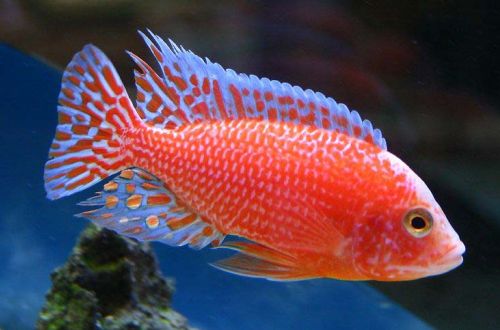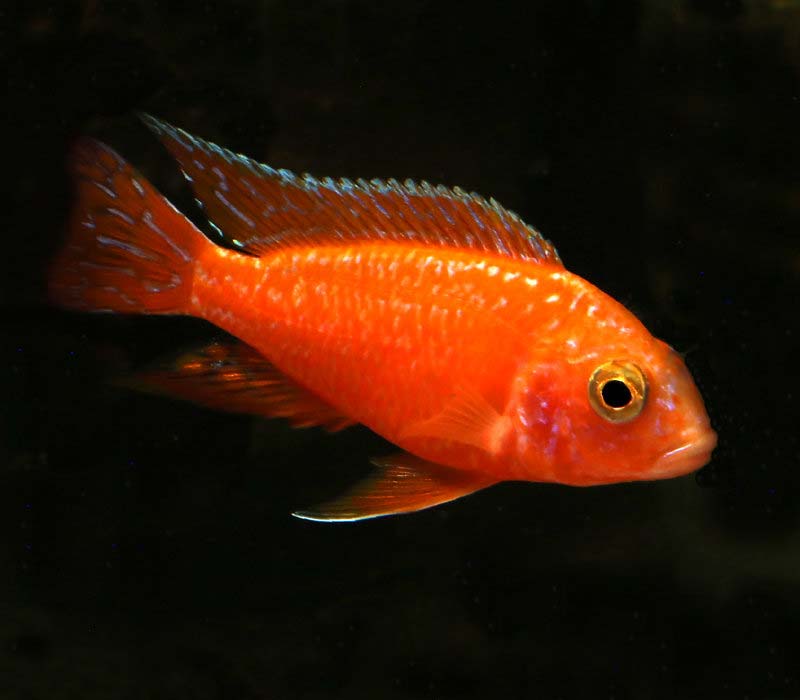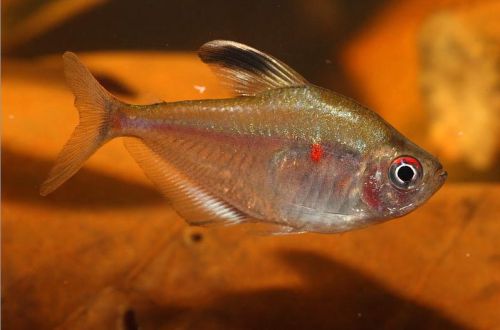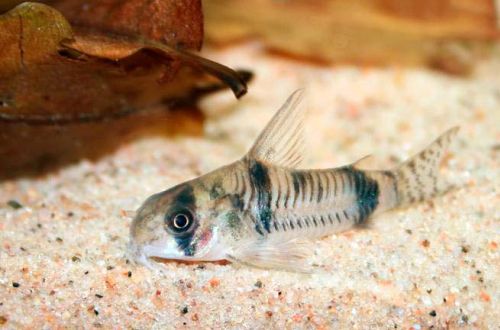
Aulonocara orchid
Aulonocara orchid red (red), also known as Aulonocara strawberry and Aulonocara dragon. The latter names are translations from the English trade names Aulonocara Dragon blood and Aulonocara strawberry.

Artificially bred, does not occur in nature. Presumably, the hybrid was obtained in the course of a multi-stage sequential selection between Aulonokara Nyasa and Aulonokara Aurika.
It is worth noting that this Malawian cichlid is known only in the post-Soviet space under the “red orchid” (eng. Orchid Red). In Europe, America and Asia, the name Aulonocara “Orchid Red” is not used.
Brief information:
- The volume of the aquarium – from 200 liters.
- Temperature – 25-29°C
- Value pH — 7.6–9.0
- Water hardness – medium to high hardness (10-25 dGH)
- Substrate type – sandy
- Lighting – moderate
- Brackish water – no
- Water movement is weak
- The size of the fish is 12–13 cm.
- Food – any sinking variety of food
- Temperament – conditionally peaceful
- Keeping in a harem with one male and several females
Contents
Description

The fish have the same morphological features as other representatives of the genus: a tall body with a large head, a dorsal fin stretching along the entire back, and pointed pelvic fins. Adults reach a length of up to 12-13 cm.
The key feature of this hybrid is the bright body coloration with predominantly pink, red or orange flowers and bluish speckled fins. This coloration is characteristic exclusively of sexually mature males. Adult females are somewhat smaller in size and have an inconspicuous gray color.
In the first 10–13 months of life, sexual dimorphism is weakly expressed, both sexes look the same with a predominance of silver shades.
Food
An omnivorous species, it feeds both in the water column and at the bottom. They accept most popular dry sinking foods (flakes, granules), as well as live or frozen brine shrimp, bloodworms, daphnia, etc.
It is recommended to purchase special foods designed for this group of cichlids, produced by many manufacturers. Poor nutrition is one of the main reasons that negatively affect the color of fish.
Maintenance and care, arrangement of the aquarium
The optimal size of the aquarium for a group of 4-6 fish starts from 200 liters. In the design, sandy or pebble soil is used with a heap of stones and boulders, from which hollow shelters (caves, grottoes) are formed.
Plants are not required. If desired, you can place several unpretentious species that can grow in an alkaline environment. Given the nutritional characteristics of Aulonocara strawberry (it can dig in the ground), it is necessary to select plants with a strong and branched root system, or plant them in individual pots. A good alternative would be aquatic mosses and ferns growing on the surface of the stones.
Maintaining a water chemistry with high pH and dGH values is key for long-term maintenance.
Maintenance of an aquarium is determined by the composition of its inhabitants and the set of installed equipment. In any case, two main procedures are considered mandatory – the weekly replacement of part of the water with fresh water and the removal of organic waste (feed residues, excrement).
Behavior and Compatibility
Like all other Malawian cichlids, the Aulonokara dragon is considered to be very temperamental, although not as aggressive as the Mbuna. In large aquariums, it successfully gets along with relatives, other Aulonokara and representatives of the Utaka group.
In the limited space of tanks up to 200 liters, it is recommended to maintain the size of the group with one male and several females. With a lack of space, males tend to compete with each other for territory and females, which is fraught with violent skirmishes.
Breeding / breeding
In the artificial environment of aquariums, the breeding season is not expressed. Fish can start spawning at any time. The male initiates courtship first. Previously, he chooses a suitable place at the bottom for future masonry, and then begins to actively invite females. Signs of attention are sometimes excessive, reaching the point of persecution. If the female is not ready, she seeks to hide in shelters – this is what caves and grottoes are for.
During spawning, the female lays several dozen eggs, which, after fertilization, end up in her mouth. There they will stay until the fry appear. The incubation period lasts up to 3-4 weeks.
Fish diseases
The well-being of fish in an aquarium is affected by the habitat. If they are kept in suitable conditions for themselves, are not subject to attacks (aggression) of relatives and receive a balanced diet, then the likelihood of a particular disease becomes minimal. Therefore, in the event of the first signs of the disease, it is worth paying attention to possible errors in the content. Read more about symptoms and treatments in the Aquarium Fish Diseases section.





